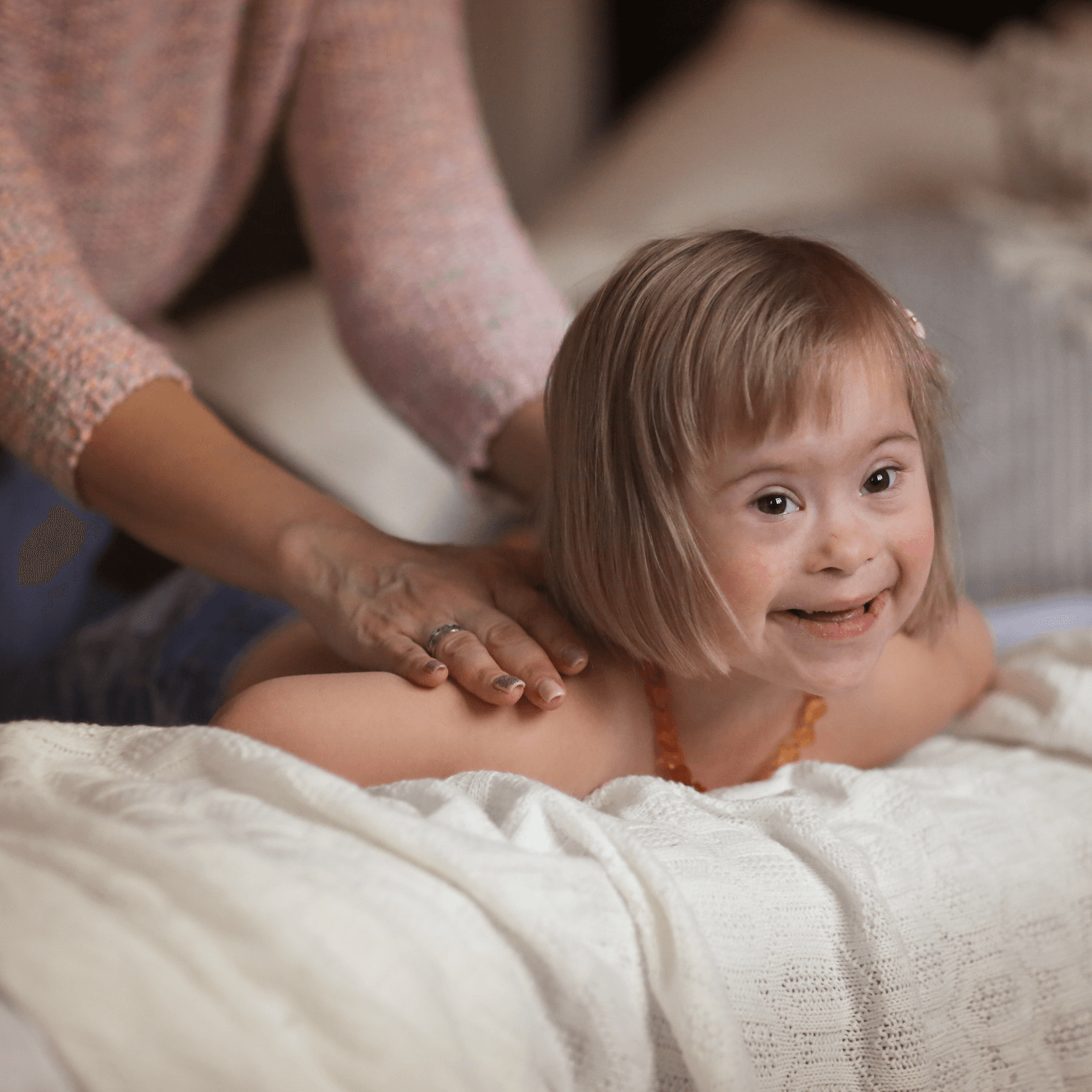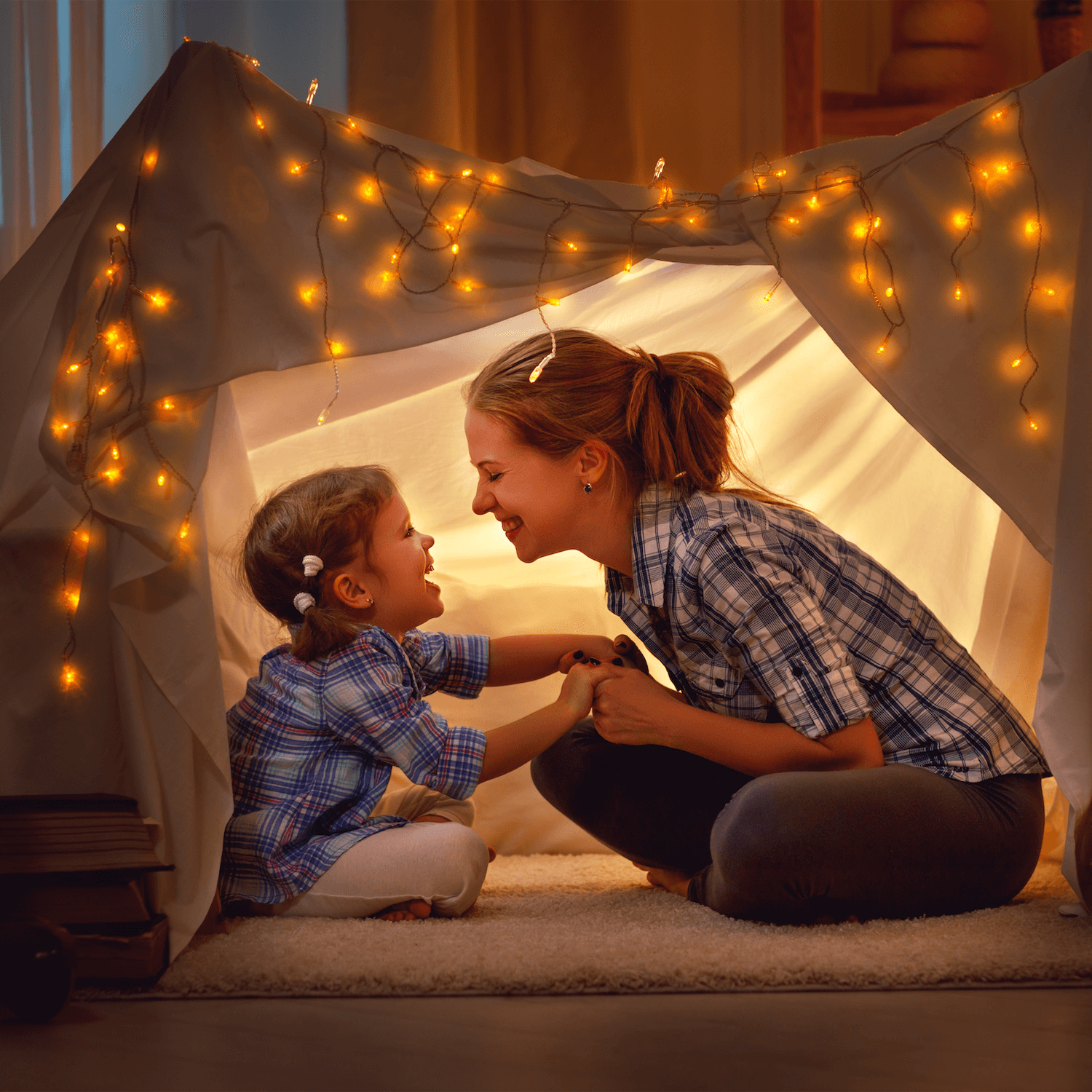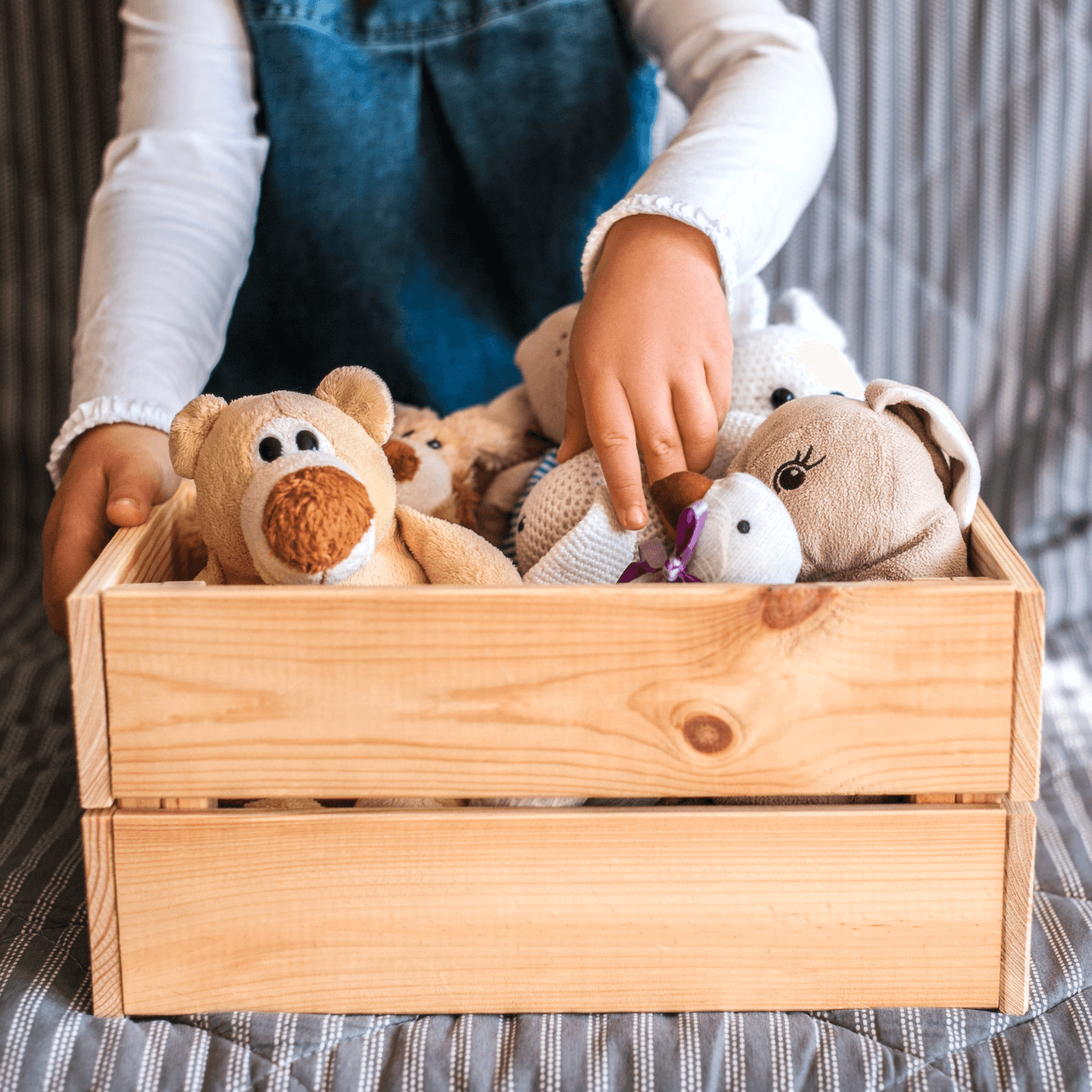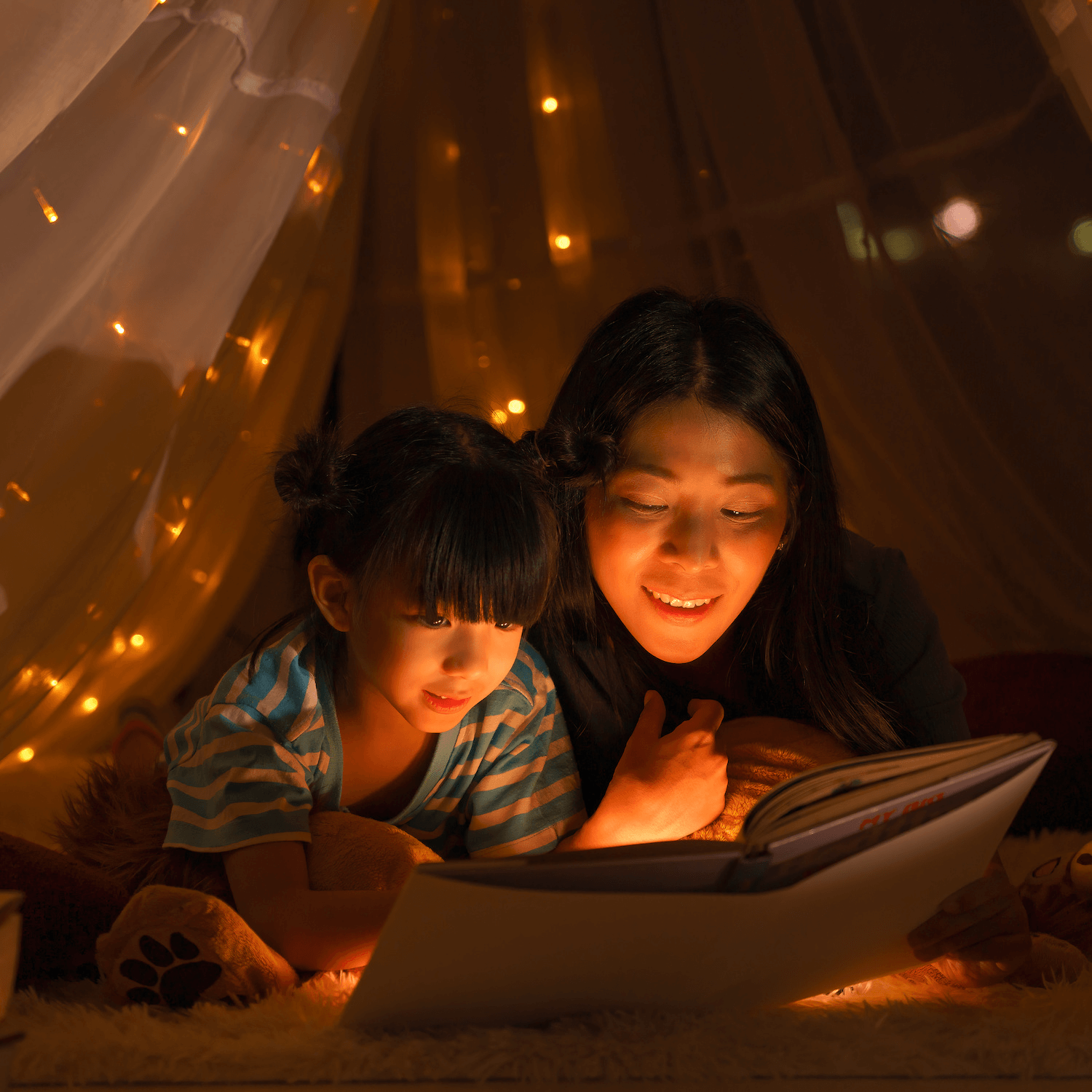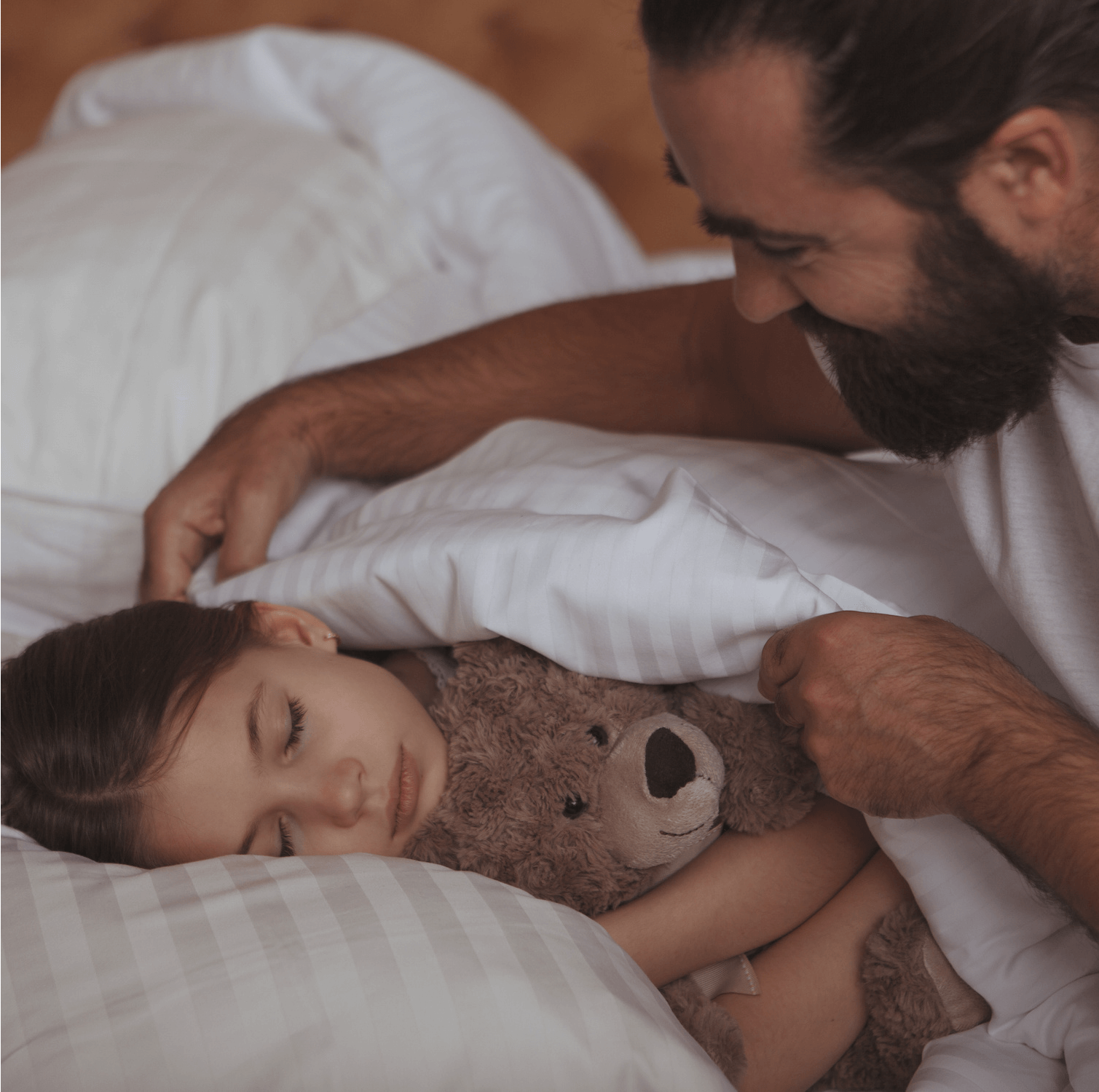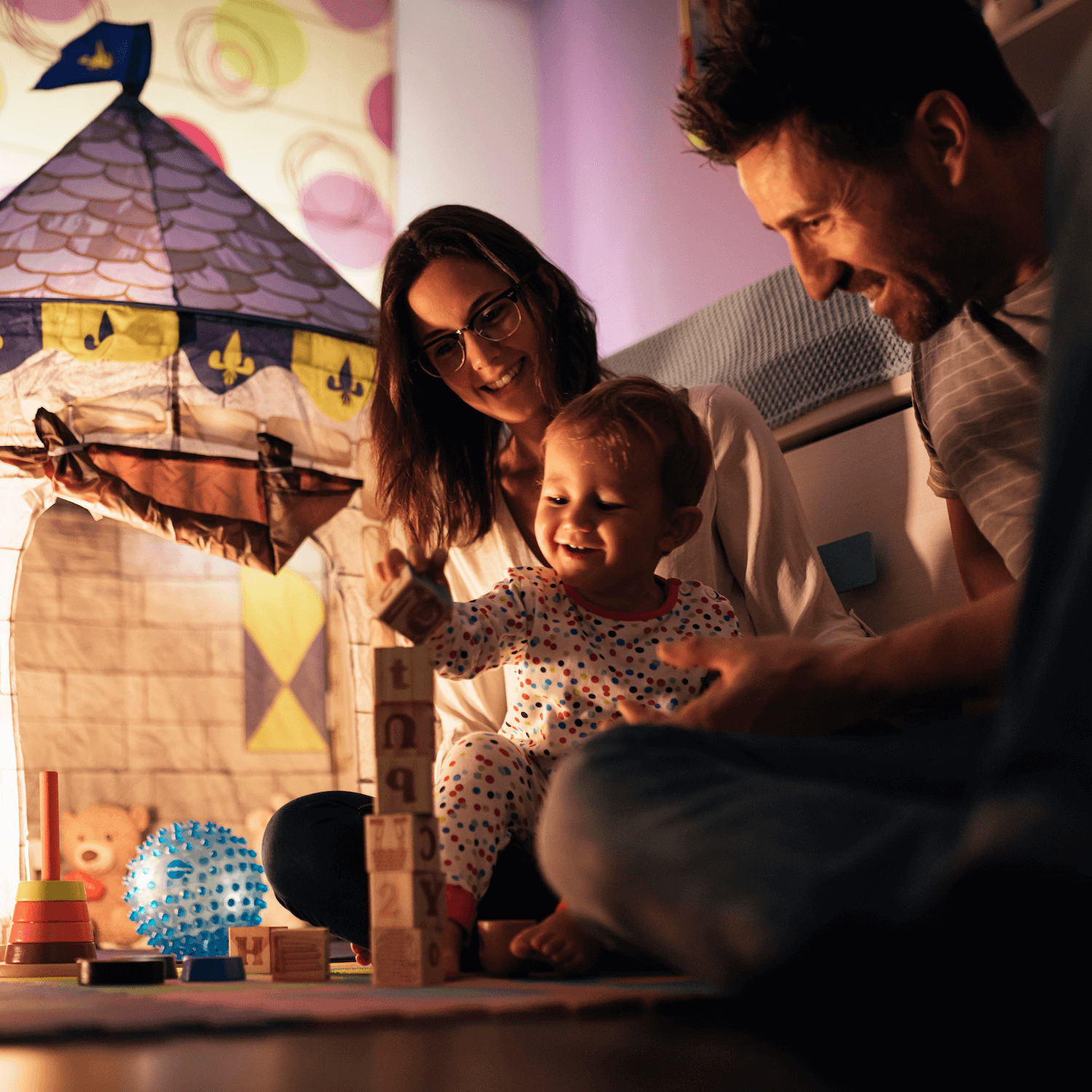
Parents & KidsFeb 2, 2022
9 Simple Tips to Get Kids on a Better Bedtime Routine
You’re tired, you close your eyes, you fall asleep. Seems easy enough, right? With kids, not so much! What
should be a simple biological response becomes as complicated as rocket science. Sleep for kids is
especially important as their bodies and brains are rapidly developing, and they need enough time resting to
support their growth processes.
Children can be taught how to go to sleep with a little help from a bedtime (and naptime) routine. This
routine ensures your children know what to expect and when, while it prepares their minds and bodies to
settle down. Aim to keep the nighttime routine to within 30 minutes of bedtime (and even less for naps).
Read on for our expert advice on how to set your kids up for a good night’s sleep. These tips will help
create positive sleep associations and a solid bedtime routine, giving you those precious extra minutes of
alone time that you so desperately need.
Start with a Warm Bath
Nothing gets an adult in the mood to snooze like a good soak in a nice hot bath. The same applies for
kids (with a cooler adjustment to the water temperature)! The water can be calming and soothing, but
there are also changes happening in our bodies behind the scenes. At the beginning of falling asleep,
our body naturally decreases its temperature. A warm bath lowers the core temperature of the body that
helps the process move along, which get us to dreamland faster.1
Try a Light Massage
Just before bedtime, try massaging their skin lightly, while applying a kid-friendly lotion. (Bonus if it
has a relaxing scent!) Gently working the muscles is another technique that is relaxing and can aid in
the process of settling down. The nurturing touch is also a great way to strengthen your bond with them.
This step can also be a good time to finish any hygiene tasks necessary before bed, like brushing their
teeth.
Dim the Lights
Nothing is worse when you are sleepy than a bright overhead light to kill your drowsy vibe. Try to make
getting ready for bed as conducive to sleep as possible. Dim the lights down low or use a lamp with a
soft low-wattage light when doing most of your routine, especially if you have LED lightbulbs. This
simple step can trick little brains to move toward the natural sleep cycle and may improve the quality
of their sleep (and yours).2
Give Them Choices
Kids don’t have much control over their lives, so give them options anytime you can if they are able to
voice their opinion with a nod, point or verbal cue. This could include a choice of bedtime story, which
pajamas they want to wear or the pacifier to accompany them. But you don’t want to overwhelm them, so
only give two options. If offering a choice, make sure to give it consistently every night, as it can
become confusing to them if some nights you offer a choice at story time and other times you don’t.
Read a Bedtime Story
Or two! Children love stories, and books at bedtime give them a chance to physically slow down, stop
moving and focus. Stick to the same number of books each time. Naptime can have less books than at
nighttime. (So, one book for naptime and two books for bedtime.) Toddlers may try to push boundaries
because everything is decided and planned out for them, so hold your ground!
Sing a Lullaby
Children love when you sing to them! Sing them a song or lullaby of your choice. If you don’t have the
best singing voice, we’ve created a dreamy Kids Sleep Playlist to get their night started right. Play it during your
bedtime routine, or if they like to nod off to soft music, leave it on for them at a barely-there volume
as you are leaving the room. (Psst, we know you might need some help too, so we’ve also created a
playlist for parents! Check out our Adults Sleep Playlist on Spotify.)
Start a Bedtime Tradition
Traditions can be something that kids latch onto and recall with fond memories when older. Like the
popular book, Goodnight Moon by Margaret Wise Brown, creating a nightly ritual with your children
saying goodnight to things in their room can help them feel safe. Or have them say “I love you” to their
stuffed animals or thank their favorite toys for playing with them that day. To make them feel comforted
and cherished, you can list out some of the people who love them, such as their grandparents or other
relatives, caretakers, friends or teachers. This step signals you’re nearing the end of the routine and
is especially helpful for older babies and toddlers.
An “I Love You” Ritual
Pick a phrase that you will say at every nap and evening just before turning off the light and leaving
the room. This will be the last cue to your children that now’s the time to doze off to dreamland.
Something like, “I’ll be back to check on you, goodnight” or a kiss on the cheek and an “I love you”
works great. Make it short and sweet!
Herbs for Extra Support*
Some nights, you try everything in your arsenal and all your efforts are futile. For the times when you
need a little extra support, have our Certified Organic Kids Fast Asleep at the ready. With time-tested, kid-friendly
botanicals like Passionflower, California Poppy, Lemon
Balm and Chamomile, you can rest easy knowing
that you have the nap and nighttime support you and your children need.* As always, our Kids line is
crafted by herbalists and formulated for efficacy with a great taste that has the kid seal of approval.
A bedtime routine is a great way to reconnect with your little one at the end of the day, especially if
you’ve been at work during the day. This time is focused on them to refill their emotional cup with lots
of love and attention. Whatever options you choose, it’s important to stick to the same routine for
every sleep session as much as possible. Children crave consistency to make them feel safe and secure.
Repeating the same routine for naps and bedtime (or overnight wake-ups) is key to signal their brains
that it’s time for bed and their bodies will soon follow. Stock up now and be ready with our Kids Fast Asleep.
Bedtime Checklist for Sleep Success
Set your children up for sleepy time success with the 10 tips and tools below:
-
1. Physical activity
Have they had enough movement during the day to create sleep drive (the need for sleep)?3
-
2. Pacifier or security object
A pacifier for a baby or a security object, like a lovey, for kids over 1 year old, can help with
self-soothing to sleep or if they wake up in the night.
-
3. Blackout curtains.
They can be your best investment to create a dark room that encourages them to sleep and stay asleep.
There’s a reason why hotels all have them!
-
4. White noise
Soft music or a constant white noise from a fan or sound machine can work as a sleep cue if used
during all nap and nighttime sleep.
-
5. Temperature
Check the thermostat and adjust appropriately for comfort, knowing that babies like it slightly
warmer than adults.
-
6. Clothing
Are they wearing appropriate clothing or layers? For younger kids, aim for one more layer than you
would be comfortable sleeping in, in the same environment. Use a swaddle (until babies can roll
over) or a sleep sack as a blanket while they’re still in a crib.
-
7. Safe Sleep
The CDC and National Institutes of Health recommend creating a safe sleeping environment for infants
by putting them down on their backs with nothing in the crib other than a hard mattress with a
tight-fitting sheet.4,5
-
8. Sunlight
Exposure to sunlight in the late morning and late afternoon helps regulate their sleep-wake cycles.
-
9. Screen time
If your kids have access to screen time, the light can affect their circadian rhythm so put it away
at least an hour before bed.
-
10. Herbs
Since you can’t run out at bedtime to the store, make sure to have our Kids Fast Asleep compound on
hand, just in case your kids need some extra sleep support.*
References
- [1] Whitworth-Turner C, Di Michele R, Muir I, et al. A shower before bedtime may improve the sleep onset
latency of youth soccer players. Eur J Sport S.2017 Oct;17(9):1119-1128.
- [2] Akacem L, Wright K, LeBourgeois, M. Bedtime and evening light exposure influence circadian timing in
preschool-age children: A field study. Neurobiol Sleep Circadian Rhythms. 2016 Nov;1(2):27-31.
- [3] Sleep Drive and Your Body Clock. Sleepfoundation.org. Published January 29, 2021. Accessed January 24,
2022. https://www.sleepfoundation.org/circadian-rhythm/sleep-drive-and-your-body-clock
- [4] Safe Sleep for Babies. cdc.gov. Published January 9, 2018. Accessed January 24, 2022. https://www.cdc.gov/vitalsigns/safesleep/index.html
- [5] About SIDS and Safe Infant Sleep. nih.gov. Eunice Kennedy Shriver National Institute of Child Health and
Human Development. Accessed January 24, 2022. https://safetosleep.nichd.nih.gov/safesleepbasics/about































